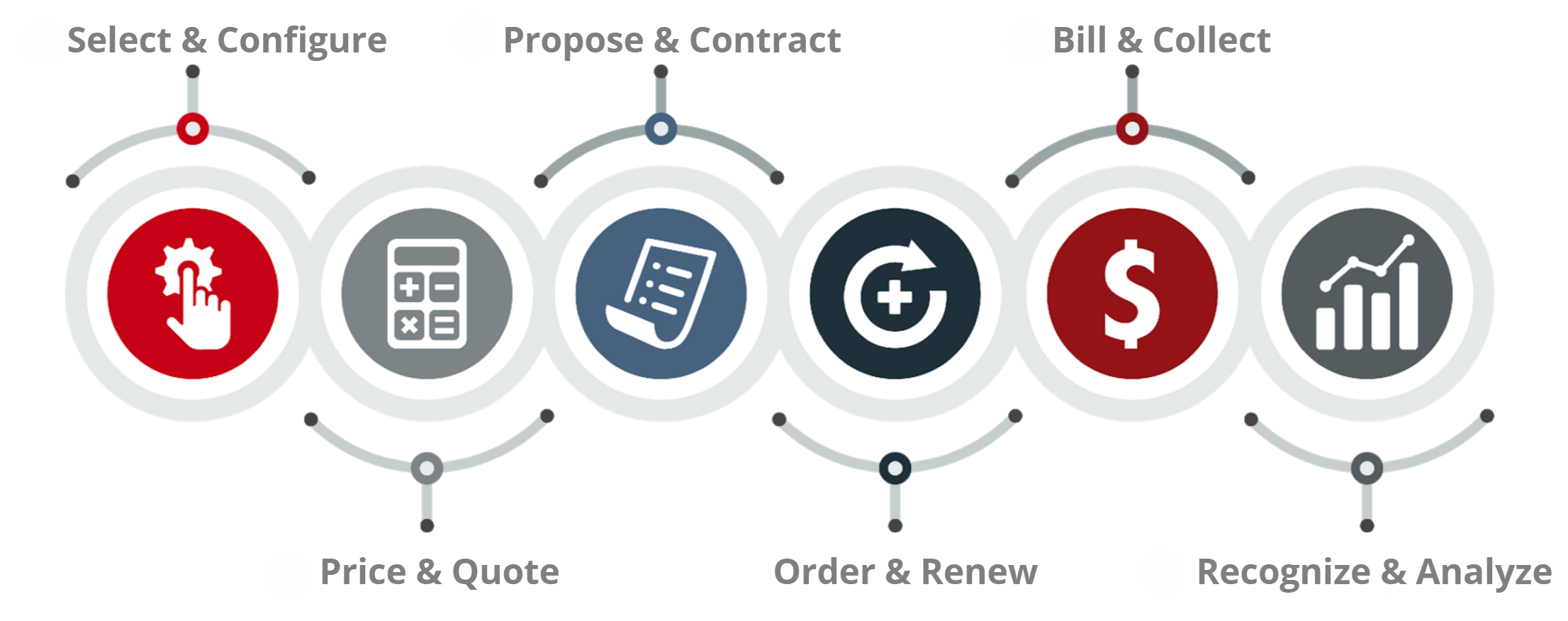
Get your FREE 30-day trial.
Please complete all fields.
This is the seventh in an eight-part series looking at the typical failure points in the last mile of the sales cycle, often referred to as the Quote-to-Cash process.
In our last installment, we looked at bill & collect, where quote-to-cash (QTC) automation speeds your process for invoicing customers. It then helps you manage and collect payments, ease tax requirements, and streamline revenue recognition and other reporting needs.
In this installment, we’ll look at the final step: recognize & analyze. This step gives you complete visibility into your entire quote-to-cash (QTC) process, from selection of the items offered in a quote through the billing, invoicing, and collection of the revenue after a deal has been won. With automated QTC managed within Salesforce Sales Cloud, all of the data across the sales cycle is readily available, making for easy analysis and fast insights.
The typical business today utilizes dozens of applications, from marketing to finance, customer service to accounting, CRM to chat. Your business transcends all of those systems, however, making it difficult to isolate your sales process--especially if any of those systems are disconnected or not well integrated.
When looking at just your sales process, it’s not difficult to see how building upon a single platform makes everything easier. Data flows, insights happen, and business accelerates. When your QTC process is built on the same system as your CRM, deals aren’t given the chance to be bogged down by data issues or manual steps.
The easiest way to be smarter about any process is to gain visibility into it. If you can’t see what’s happening, you’re not able to know where you’re doing well and not-so-well.
With visibility comes intelligence. For a constantly improving sales process you want-no, you need-visibility and insights across the complete customer lifecycle. Quote-to-Cash says it all: you want visibility from the moment a quote is prepared through the collection of cash from the customer.
Quote-to-Cash analytics gives you a better understanding of your sales and revenue processes, and highlights how you can find areas for improvement. When you’re working from a common platform, your data is already in a “single source of truth,”eliminating frustrating data transfers and inevitable questions about the data quality and its impact on your results.
Visibility into your customer lifecycle opens up opportunities for you to look deeply into the factors that drive your business.
For example, can you currently track close rates by product family? Can you determine which regions are offering higher discounts (and therefore less profitability)? Or track which sales role is more likely to upsell add-ons or services?
Analytics doesn’t just mean end-of-the-month reports and sales rep leaderboards. True analytics gives you insights into the levers you can use to improve your business. Things like average profit margins by offering, contract length by region, contract terms by how often they are overridden, and most-sold items and combinations.
And it’s not just sales who can benefit from this visibility. Legal, finance, sales ops, customer service, operations, product and service teams can all benefit from better visibility into what’s selling, what’s not, and what’s blocking growth.
With this intelligence you can start to sell more, sell smarter, and sell faster.
Automated QTC streamlines the last mile of your sales process. Built-in analytics extends the value of QTC by providing full visibility into the customer life cycle. When it all happens within Salesforce, it’s cheaper, easier, and faster all around, from implementation to integration to intelligence.
QTC analytics benefits executives across sales, finance, product management and legal. Sales can track close rates and average discounts by region and product family. Finance can look into average margins, payment terms and contract length by region and product family. Product can get real-time visibility into most often quoted/sold products and product combinations. Legal can see which standard terms are overridden.
Remember how we began this post: The typical business today utilizes dozens of applications. Adding yet another app to manage QTC is often not simple, and it can come with a host of challenges around integration, data integrity, usability, adoption, and more. Avoiding those challenges is why choosing a QTC app that’s a part of the CRM you already use, Salesforce, makes for more valuable insights from day one.
Next, we’ll wrap up the “Last Mile” series with the final installment. We’ll pull together a recap of QTC benefits and a look into how easy it is for Salesforce CRM users to get started with automated QTC.
Want to learn more? Check out Salesforce Wave.